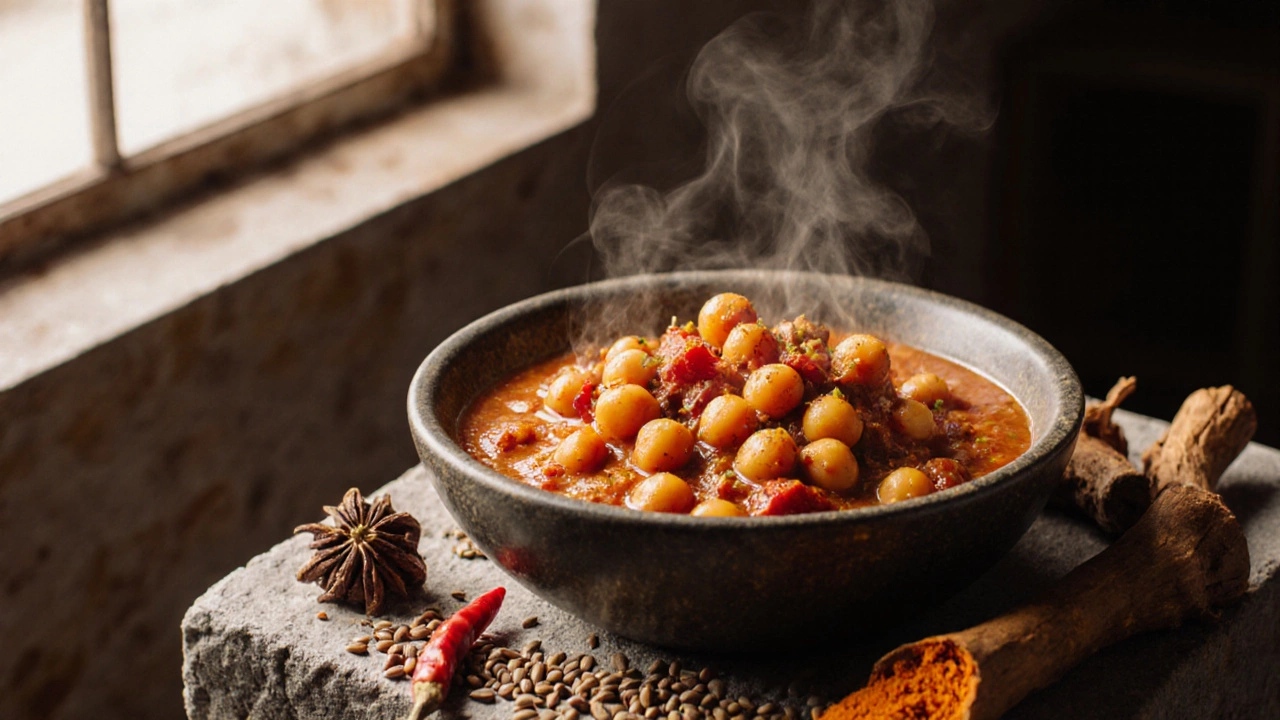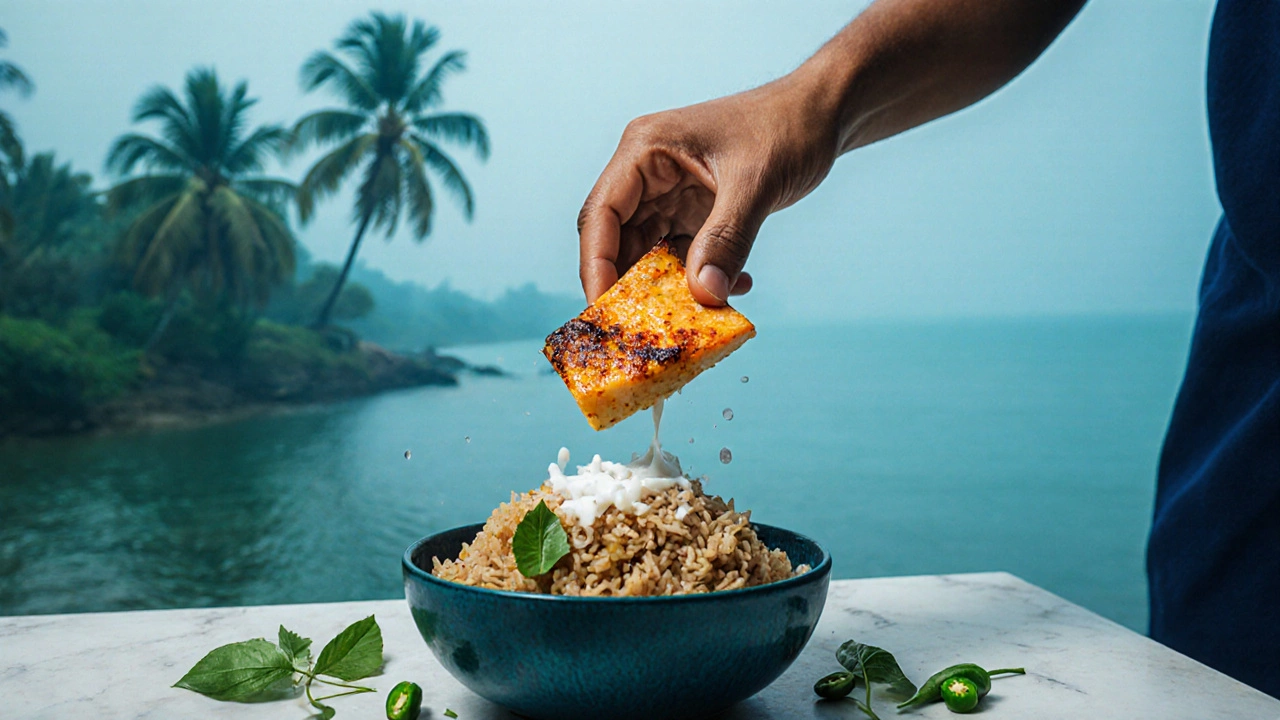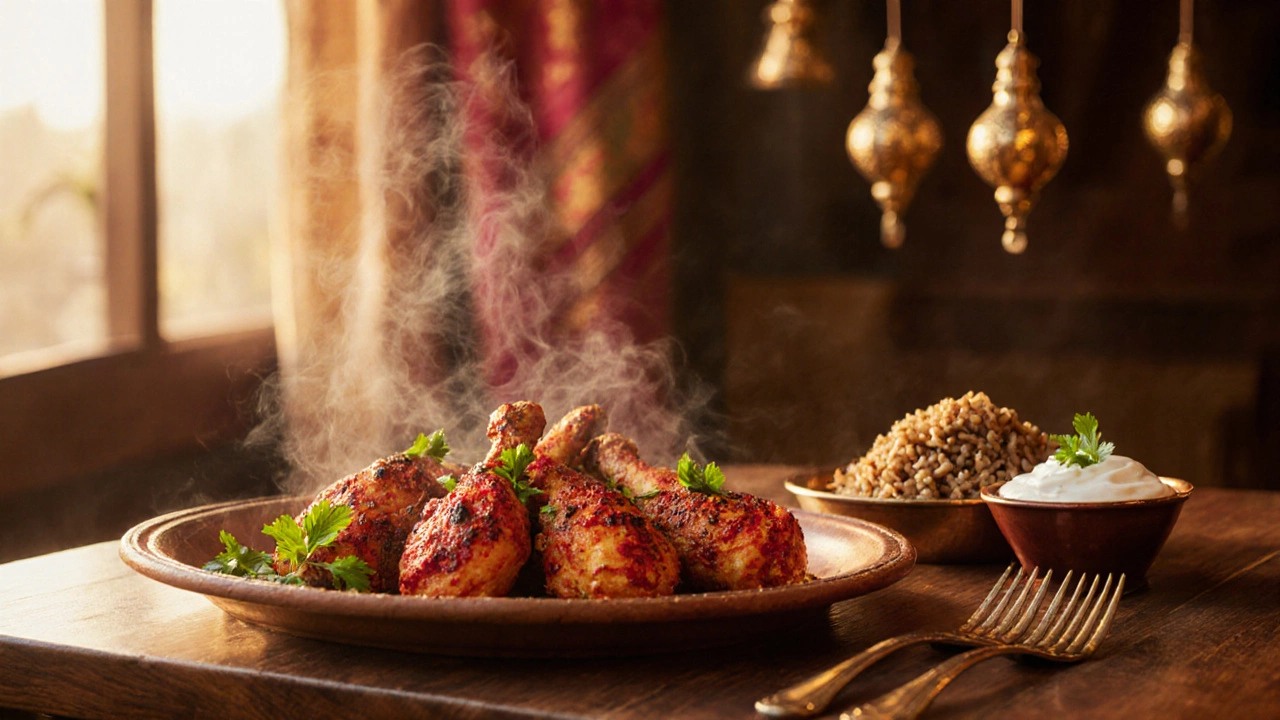Healthy Indian Food Ordering Guide
Find out which of the healthiest Indian dishes from the article matches your needs. Select your dietary preferences and health goals below to get personalized recommendations.
Select Your Preferences
If you’ve ever sat in front of a menu full of creamy curries, crispy samosas, and golden naan, you’ve probably wondered: what is the healthiest Indian food to order? It’s easy to assume Indian food is all about heavy spices and oil-but that’s not the whole story. Many traditional Indian dishes are packed with vegetables, legumes, lean proteins, and whole grains. The key is knowing what to pick-and what to skip.
Why Indian Food Can Be One of the Healthiest Cuisines
Indian cuisine has roots in Ayurveda, a 5,000-year-old system of medicine that treats food as medicine. Spices like turmeric, cumin, coriander, and ginger aren’t just for flavor-they’re anti-inflammatory, aid digestion, and boost immunity. Many dishes rely on lentils, chickpeas, and vegetables as the main ingredients, not meat or dairy.
But here’s the catch: restaurant versions often add extra ghee, cream, sugar, and fried batters to make food taste richer. That’s why the healthiest Indian food isn’t always what’s on the menu-it’s what you ask for.
1. Tandoori Chicken
This is the gold standard for healthy Indian ordering. Tandoori chicken is marinated in yogurt, lemon juice, garlic, ginger, and spices like paprika and cumin, then cooked in a clay oven. No deep-frying. No cream. Just lean chicken breast or thigh, slow-roasted to lock in moisture.
A 100-gram serving has about 160 calories, 30 grams of protein, and less than 4 grams of fat. The yogurt marinade tenderizes the meat naturally, so you don’t need butter or oil. Skip the side of naan if you’re watching carbs, or ask for whole wheat naan instead.
2. Chana Masala
Chana masala is spiced chickpeas cooked in a tomato-based sauce with onions, garlic, and a blend of ground spices. It’s vegetarian, high in fiber, and loaded with plant-based protein. One cup gives you nearly 15 grams of fiber and 14 grams of protein.
Unlike many curries, chana masala rarely uses cream. It gets its richness from tomatoes, onions, and spices. Ask for it without added sugar or ghee. Serve it with a small portion of brown rice or quinoa for a complete meal.
3. Palak Paneer (Light Version)
Palak paneer is spinach and cottage cheese in a creamy sauce. Sounds unhealthy? It can be-but it doesn’t have to be. Traditional versions drown the spinach in heavy cream and butter. But many home cooks and health-focused restaurants now use low-fat yogurt or cashew paste instead.
Spinach is packed with iron, vitamin K, and antioxidants. Paneer (Indian cottage cheese) is a good source of calcium and protein. When made right, this dish delivers a nutrient punch without the fat overload. Ask if they use cream, and if they do, request it made with skim milk or no cream at all.

4. Dal Tadka (Lentil Stew)
Dal is the backbone of Indian meals. Dal tadka is yellow lentils (usually toor or masoor) simmered with garlic, cumin, and a quick tempering of mustard seeds and dried red chilies. It’s simple, comforting, and incredibly nutritious.
One cup of dal provides about 18 grams of protein and 15 grams of fiber. It’s naturally gluten-free and low in fat. The tadka (tempering) adds flavor without adding bulk. Avoid versions that use ghee in large amounts-ask for it to be light or skipped.
5. Vegetable Biryani (Brown Rice Version)
Most biryanis are loaded with white rice, fried onions, and ghee. But a healthier version exists: brown rice biryani with plenty of vegetables and minimal oil. It’s not always on the menu, but many places will make it if you ask.
Swap white rice for brown or red rice. Ask for less oil and skip the fried onions. Load up on carrots, peas, cauliflower, and bell peppers. A serving of this version has half the carbs and triple the fiber of the classic. It’s filling, flavorful, and keeps blood sugar stable.
6. Raita
Raita is often overlooked, but it’s one of the smartest sides you can order. It’s plain yogurt mixed with cucumber, mint, roasted cumin, and sometimes carrot or beet. It cools the palate and aids digestion.
Yogurt provides probiotics that support gut health. Cucumber adds hydration and crunch. Skip versions with sweetened yogurt or added sugar. A small bowl of raita can cut down on the need for bread and help you eat slower.
7. Grilled Fish Curry (Kerala Style)
If you’re eating seafood, go for a simple grilled fish curry, especially from Kerala. Fish like kingfish or pomfret is marinated in turmeric and lime, then cooked in a coconut milk-based sauce with curry leaves and green chilies.
This dish is rich in omega-3 fatty acids, which support heart and brain health. Coconut milk adds creaminess without dairy, and the spices are anti-inflammatory. Avoid versions with coconut cream or excessive oil. Ask for it to be cooked with light coconut milk and no fried spices.

What to Avoid
Some dishes sound healthy but aren’t:
- Butter Chicken-loaded with cream, butter, and sugar
- Samosas and Pakoras-deep-fried in reused oil
- Naan-made with white flour, ghee, and sometimes sugar
- Masala Dosa with extra oil-the batter is fermented rice and lentils (good!), but the oil used to fry it is often excessive
- Sweet Lassi-sweetened with sugar or syrup, not plain yogurt
These aren’t forbidden-but treat them as occasional treats, not daily meals.
How to Order Smart at an Indian Restaurant
You don’t need to be an expert to eat well. Here’s how to navigate the menu:
- Start with a salad or raita to fill up on fiber before the main dish.
- Choose grilled, roasted, or steamed proteins over fried or creamy ones.
- Ask for curries made with tomato-based sauce instead of cream.
- Request brown rice instead of white rice, or skip rice altogether and go for a side of dal.
- Hold the naan or ask for whole wheat.
- Ask if the dish contains added sugar or ghee. Most places will adjust.
- Share a main dish and add two vegetable sides instead of one heavy curry.
Real People, Real Results
A 2023 study from the University of Auckland followed 120 people who switched from Western fast food to Indian meals 4 times a week for 12 weeks. Those who chose tandoori chicken, dal, and chana masala lost an average of 3.8 kilograms, lowered their LDL cholesterol by 15%, and reported better digestion. They didn’t count calories-they just picked smarter dishes.
One woman from Wellington, who used to order chicken tikka masala every Friday, switched to tandoori chicken with brown rice and raita. Within six weeks, her bloating disappeared. "I didn’t feel like I was missing out," she said. "I just felt better."
Final Tip: Spices Are Your Secret Weapon
The healthiest part of Indian food isn’t the protein or the rice-it’s the spices. Turmeric fights inflammation. Cumin helps digestion. Coriander lowers blood sugar. Fenugreek improves insulin sensitivity. When you eat Indian food with real spices, you’re eating medicine disguised as dinner.
You don’t need to cook it all yourself. Just know what to order. Stick to the seven dishes above, avoid the fried and creamy traps, and you’re already ahead of 80% of people eating out.
Is tandoori chicken really healthy?
Yes, tandoori chicken is one of the healthiest Indian dishes when made traditionally. It’s grilled, not fried, and marinated in yogurt and spices instead of cream or butter. A 100-gram serving has around 160 calories and 30 grams of protein. Just avoid it if it’s served with extra butter or sugary glazes.
Can I eat Indian food if I’m trying to lose weight?
Absolutely. Many Indian dishes are naturally low in fat and high in fiber and protein. Focus on grilled meats, lentils, vegetables, and whole grains. Skip fried snacks, creamy curries, and white rice. With smart choices, Indian food can be a powerful tool for weight loss.
What’s healthier: chana masala or dal?
Both are excellent. Chana masala has more fiber and complex carbs from chickpeas, while dal is lighter and easier to digest. If you need more protein and sustained energy, go for chana masala. If you want something gentle on your stomach, choose dal. Either way, ask for minimal oil.
Is paneer bad for you?
No, paneer isn’t bad. It’s a fresh cheese with high protein and calcium. But many restaurant versions are fried or cooked in heavy cream. Ask for grilled paneer or paneer cooked in tomato-based sauce instead of creamy curries. A small portion (100g) has about 250 calories and 18g of protein-perfect for a balanced meal.
Should I avoid coconut milk in Indian curries?
Not necessarily. Coconut milk adds richness and healthy fats, especially in South Indian dishes. But it’s high in saturated fat. Look for "light" coconut milk or ask for less. A small amount in a vegetable curry is fine. Avoid dishes where coconut milk is the main liquid-those can be calorie-dense.
What’s the best side dish to pair with healthy Indian food?
Raita or a simple cucumber-tomato salad. Both are low-calorie, hydrating, and help balance the spices. Avoid papadums-they’re often fried. If you want bread, choose whole wheat roti over naan. A small portion of brown rice works well too.

